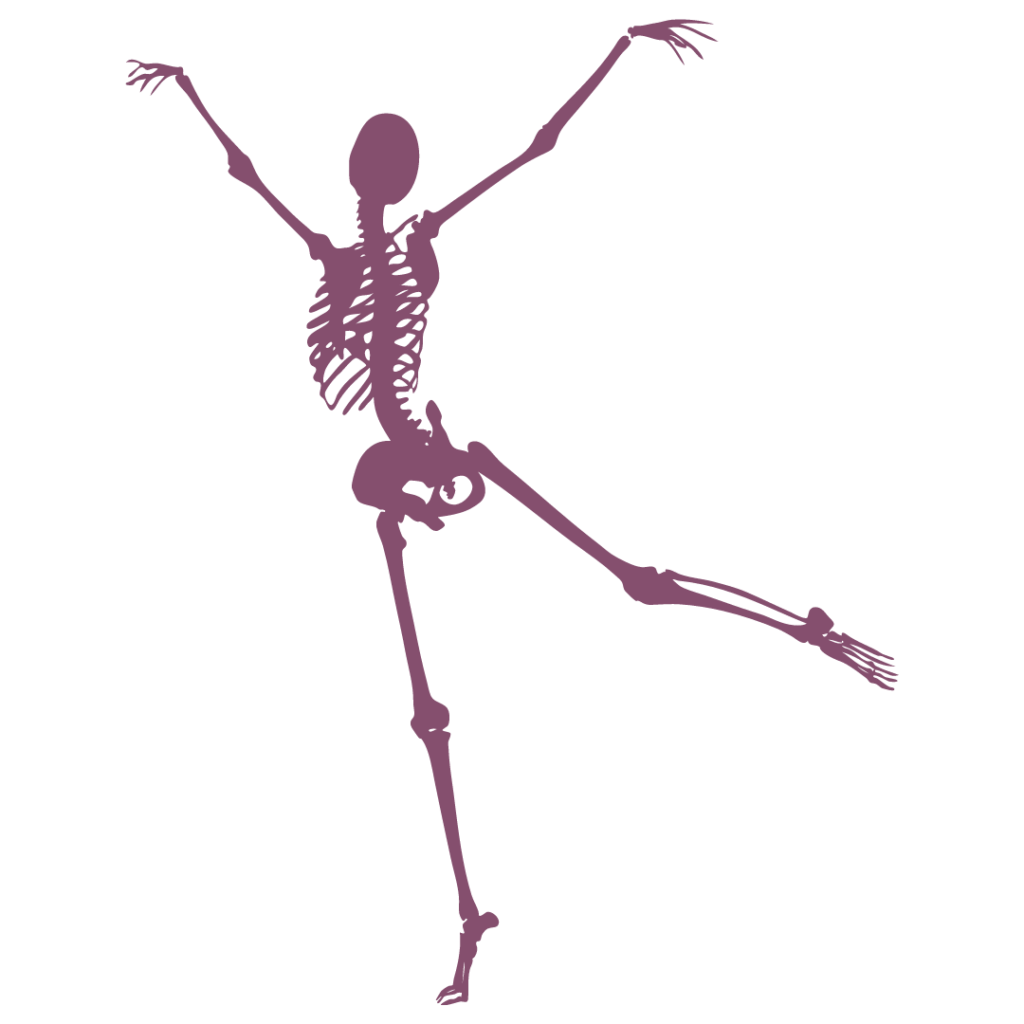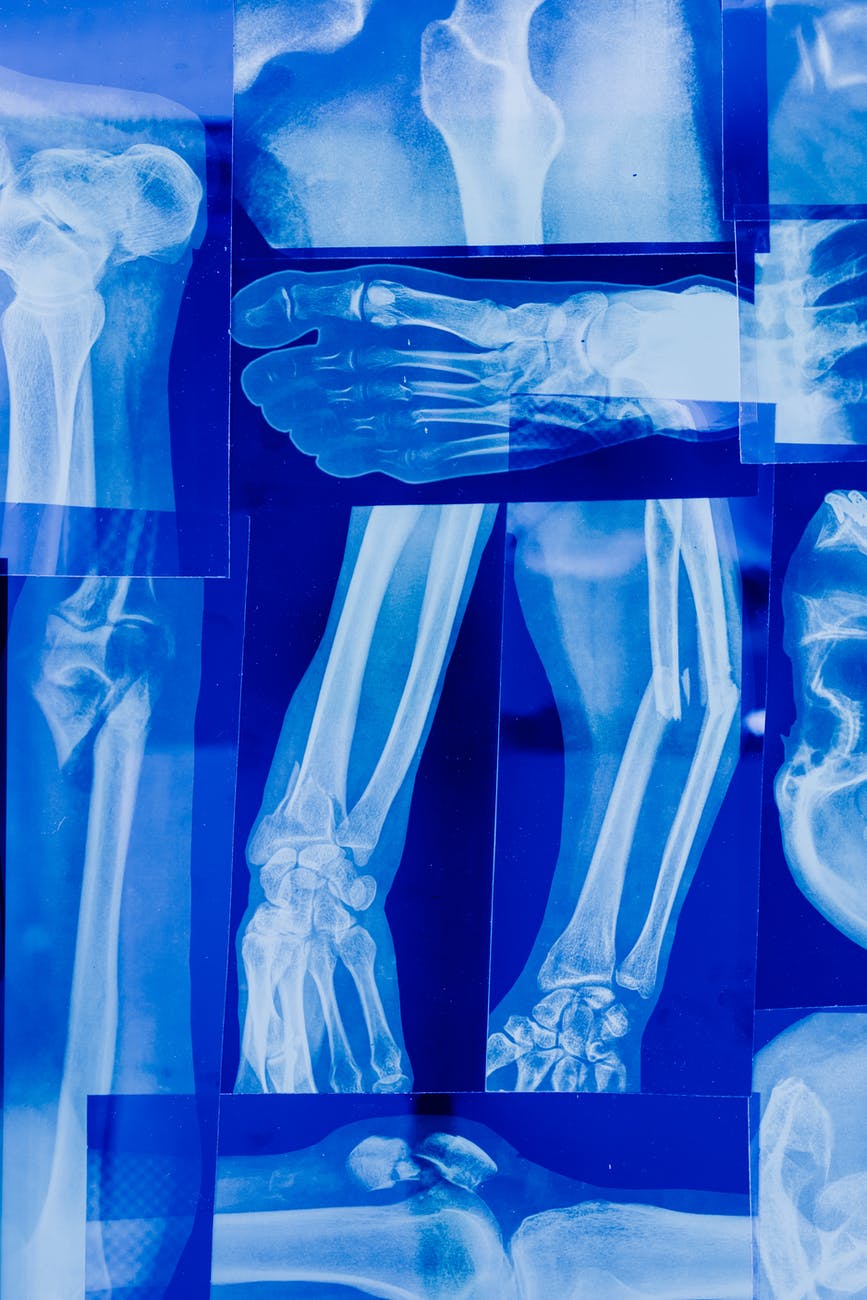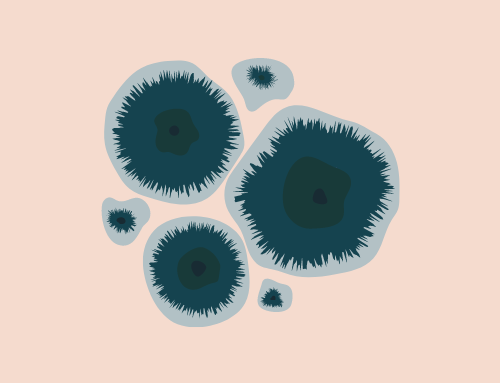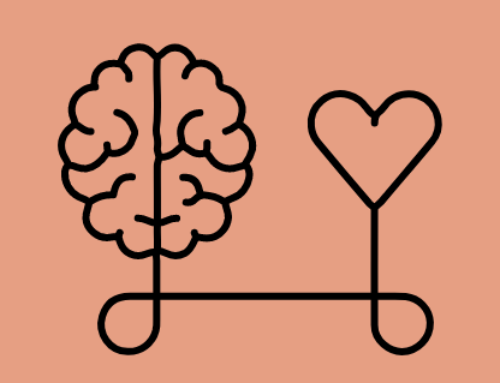Updated 10/8/23; Originally posted 5/16/22
Bones are your body’s structural framework. When we are babies, our bones are soft and pliable. We bounce! As we age our bones fill with minerals and get harder. If we lose the pliability we are born with, our bones become brittle and break easily – not good! If we lose our bone’s mineral rich interior, our bones shift towards a foamy texture and lose their strength sending us looking for osteoporosis natural remedies! This article explains the what, why, and how of keeping your bones pliable and strong for a long, rich life!

What is Inside Your Bones?
Bones are a complex blend of 3 types of materials:
- Inorganic Bone Matrix – This is where the minerals are kept that contribute to bone strength and density including calcium, phosphorus, chloride, fluoride, manganese, carbon, magnesium, and strontium. The entire body can request the minerals kept in this storage warehouse.
- Organic Bone Matrix – This is where the proteins, fats, and growth factors exist so that bones have all they need to stimulate growth, be pliable, assist with bone remodeling, and interact with bone marrow cells. Collagen and other proteins create a web of cross-linked fibers that create a framework to hold the minerals which is strong but pliable.
- 4 Types of Cells
- Mesenchymal or adult stem cells – these magical cells that make up your bone marrow can be recruited for healing all over the body because they can self replicate and they can change into any type of cell the body needs.
- Osteoblasts – bone cell nurseries created from the Mesenchymal cells inside the bone – use calcium, phosphorus, and more from the Inorganic Bone Matrix to create the main bone hardness ingredient – minerals bound together into hydroxyapatite – and also create the web of collagen from the Organic Bone Matrix which cradles the hydroxyapatite
- Osteocytes – living active bone cells that send out signals for their own demise based on hormone levels including vitamin D and also send out signals to generate new growth based on applied stresses to the fluid inside the Osteocyte
- Osteoclasts – created by your immune system to generate the enzymes for bone cell breakdown and to recycle the pieces of broken Osteocytes
Self Repair of a Bone Fracture
When a bone is broken, the blood inside the bone clots and both fibroblasts and osteoblasts form in the area within days of the injury. Fibroblasts on the inside of the bone start to make the connective tissue needed to weave the bone back together. Osteoblasts on the bone surface start to make new bone cells which will make the bone strong again as minerals are deposited into the connective tissue. Depending on your age, health, and nutrient status, this process could take a few years before the fractured area fully duplicates the bone’s initial shape and strength.

Bone Resorption
All over the body, old, damaged cells are broken apart and the pieces recycled or removed from the body as needed. This process happens in the bone as well and is called Bone Resorption. The body breaks down the bits of suboptimal bone cells and puts the ingredients into the blood stream for redistribution or excretion. The Osteoclasts manage this task and are stimulated by the chemical messengers from the Osteocytes (“I’m not feeling good – please eat me!”).
Bone Remodeling
Your bones are constantly remaking themselves into newer versions which I hope are stronger and more pliable! This process is called bone remodeling. It takes about 17 weeks for a small section of bone to remodel. About 10% of your bone tissue remodels every year so you get a whole new set of bones every decade!
Ideally, bone remodeling is a smooth process where the rate of bone breakdown and the rate of bone growth are matched in an adult. This requires good levels of all necessary ingredients as well as optimal chemical messengers and other signaling molecules which control the relevant processes. Growth factors (various forms of proteins) from your younger years lie dormant within the bone matrix, ready to reactivate when needed for the normal live bone processes of resorption and remodeling.

What are Osteopenia and Osteoporosis?
Osteoporosis and Osteopenia are medical diagnoses that inform you that you are losing bone strength and density. These diagnoses are based on the result of a bone mineral scan (described below). Osteopenia refers to having a lower bone density test result low enough to be of concern to your doctor. Osteoporosis indicates an even lower bone density associated with frequent and easy broken bones.
Both indicate that your bones are breaking down faster than they are being built up. Another way to say that is your process of bone resorption has become imbalanced due to nutrition, lack of exercise, toxins present in the body, and overactive immune system, low hormone levels, medications, or poor nutrient absorption in the gut.
While some doctors might lead you to believe you can not “cure” osteopenia and osteoporosis, others know that your can make (sometimes big!) adjustments to your lifestyle and successfully rebuild your bone density and health.
Tests for Bone Health
Sometimes we find out of bones are less than healthy when we fall or otherwise experience an injury. There are of course other ways if you are trying to be proactive. 🙂
- DEXA scan – If you truly want to know the density of your bones, you can get a DEXA scan. This low dose x-ray (similar radiation exposure to flying from NY to CA) will inform you about your bone density (mineral content) but does not tell you about your bone quality (connective tissue health and content). You want your bones to be flexible. Anything that breaks down connective tissue (like smoking) will give you wrinkles, cardiovascular disease, and brittle bones. Having said that, one idea that makes a lot of sense to me is to get a scan when you are young, healthy, and in your prime bone bass years (20-25 years of age). Then you have your personal baseline to compare to when you are in your 50’s, 60’s and older. You can tell exactly how young your bones are when you get another scan for a later birthday!
- 24 Hour Urine Calcium Excretion Test – over the course of 2 day, how much calcium are you peeing out? Are you peeing out your bones? Of course this test result is affected by your calcium supplement, so you might want to stop your supplement for 5 days before your test.
- N-telopeptides crosslinks (NTx) urine/blood test or deoxypyridinium (Dpd) crosslinks urine test – These protein fragments (NTx or Dpd) is created by the break down of bone by an Osteoclast. How active are your Osteoclasts? Do they need toned down?
If you want to talk to me about which of these makes sense, you can!
8 Reasons Bones Degrade
If you want your bones to grow stronger and more pliable instead of breaking down, it is important to understand the reasons that bones break down instead of building up. Here are 8 reasons – which ones apply to you?
- Too much Bone Resorption – Ostoclasts are too active
- Not enough Bone Growth – Osteoblasts are napping
- Insufficient minerals in the Inorganic Bone Matrix for Osteoblasts to use
- Insufficient proteins and water in the Organic Bone Matrix for Osteoblasts to use
- Toxins within the bones or blood are activating the immune system and compromising the structure of your bones
- Low levels of the hormones and growth factors that support bone growth
- High levels of the hormones that support bone breakdown
- Chronic low grade inflammation distracting the body from proper bone maintenance and stimulating Bone Resorption (bad!)
21 Actions to Avoid Osteoporosis and Improve Your Bone Health
There are plenty of action steps you can take to protect your bone health and even improve it! Read on and consider where you want to focus first. Ask questions whenever you are ready!
Improve Your Mineral Intake to Build Bone Density
- Get Adequate Calcium Intake – Calcium is the most prevalent mineral in bone but simply supplementing with calcium is not enough to avoid osteoporosis. Over half of most calcium supplements is not absorbed by your body even in optimal conditions which is why I prefer DiCalcium Malate. Too much calcium in your blood can result in calcium deposits in your blood vessels, breast tissue (mimicking tumors), bowels (creating constipation), and organs (creating stones). Calcium is nature’s bandage – it goes to anywhere damaged and sticks it together. Before jumping on the calcium pill bandwagon, keep reading…
- Get Your Magnesium Up – Magnesium helps draws calcium out of the blood (via its interaction with Vitamin D) and into the Inorganic Bone Matrix so that it is available to help make strong bones. It is also crucial as an activating agent for over 300 processes in the body, helps reduce inflammation, and assists with energy production on the cellular level. Magnesium and calcium intakes should be similar which means for every cup of milk you drink (or the calcium equivalent), consider also having 1 capsule of Magnesium Breakthrough.
- Optimize Your Potassium Levels – If you diet is rich in vegetables and fruits, perhaps your potassium intake is high. Otherwise, you are missing out on this important mineral that helps stop bone breakdown due to high acid levels inside and outside the bone. Potassium controls the fluid level and alkalinity inside cells – including bone cells. A proper acid/alkaline balance in your bones helps keep the calcium where it belongs – in your bones – instead of activated Osteclasts breaking down your bone cells and sticking the calcium in your blood for disposal by your kidneys. If live in the Charles County area of Maryland and want easy access to fresh, organic vegetables to boost your potassium levels, I suggest you order from Next Step Produce and pick up at my studio and join into the monthly group order for Farmers Juice for convenience!
- Ensure Zinc, Copper, and Manganese levels – these important trace minerals are cofactors for Osteoblast activity and inhibit Osteoclast activity – so they encourage bone growth.
- Get Optimal Iron – Iron is what makes your red blood cells red! It is also crucial for oxygen transport through out the body. Bone cells need oxygen and Osteocytes are particularly sensitive to their oxygen levels. Iron is a cofactor for collagen synthesis, so low iron levels lead to brittle bones that have less structure and integrity. You can test your iron levels through a Iron Panel Blood Test or through your doctor and insurance.
- Ponder your Phosphorus Intake – This mineral is important for your entire body including your bones and is often present in our diet and body on quite high levels. Check out this list of high phosphorus foods but remember that soda/cola/pop is incredibly high in phosphorus. Eat more vegetables and you will lower your phosphorus levels and make space for more calcium/magnesium in your bones and teeth!
Detox Your Body and Stop Breaking Down Your Bones
- How Acidic is your Pee? – If you are peeing out the minerals from your bones, you want to know right? An acidic internal environment (from diet or toxins like alcohol and sugar) will anger your Osteocytes and speed up the bone dissolving action of the Osteoclasts. The Osteoclasts will send your minerals to your blood for your kidneys to send out through your urine – making it acidic. Test your Urine pH to see how acidic your pee is – particularly in the morning (I use Keto-pH™ urine test strips). Then adjust your diet! Need help with that? Schedule a Wellness Consultation with me and let’s talk!
- Detox the Lead and other Heavy Metals stored in your Bones – Lead has an affinity for your bones and teeth. Lead is also toxic to your body. Not a good match! Exposure to leaded gasoline or airplane fuel, lead-based paint, and old water pipes even as a child can lodge lead in your bones that causes trouble when you are older. I would love to help you with a heavy metal detox!
- Lower Your Inflammation – When your immune system is overly active – as it is when you live with chronic inflammation, your Osteoclast numbers go up and your bone health decreases. There are so many steps you can take to lower your inflammation that I am sure you can find several for yourself. How about adding an Omega 3 Supplement, eating more vegetables, Red/Infrared Light Therapy, time restricted eating, Infrared Sauna, and exercise as starters?
- Lower your Stress – Cortisol, your main stress hormone, disrupts the dance between Osteoblasts and Osteoclasts resulting in bone degradation. If you want stronger bones, lower and manage your chronic stress and add some beneficial stressors like time restricted eating and exercise!
Your Hormones: Helping or Harming Your Bones?
- Check your Parathyroid Hormone Levels – Your parathyroid glands (they nestle around the thyroid) generate hormones that control your calcium absorption in your gut, calcium levels in your blood, and therefore the calcium levels in your bones. Your blood calcium is superbly regulated because of the importance of calcium for your heartbeat and nerve function. Your parathyroid hormone can instruct calcium to leave the bones to the blood or instruct calcium to leave the blood for your bones.
- Testosterone for Bone Growth – Testosterone encourages bone growth by stimulating the creation of Osteoblasts (after it converts into the needed form of estrogen). As men and women both age, our hormone levels decline which sets us up for more bone breakdown and less bone creation. Exercise raises testosterone levels for both men and women so move your body for your bones! Join me virtually or in the La Plata, MD studio if you want bone friendly movement classes.
- Estrogen Matters to Bones – Estrogen affects the immune system enough that when women have high estrogen levels bone resorption is inhibited by a lower number of Osteoclasts. As we age, our hormone levels decline which sets us up for more bone breakdown and less bone creation. If you are a woman, does that mean you want to explore bio-identical hormone replacement as an option for supporting your menopausal bone health? Only you can answer that! Some studies show that the soy isoflavones that mimic estrogen might help with bone health, but they are also a “weak” estrogen which is not-ideal. If you are a man, be aware that some of your testosterone must convert into estrogen for the sake of your bones.
- Get Enough Vitamin D – Vitamin D stimulates Osteoblast activity. Getting your level of active vitamin D in your blood to a level of 60 ng/dL or possibly higher if your Vitamin D Receptors are suboptimal (genetically) can make a huge difference to your bone health. You can get your current Vitamin D blood levels through an at home test, at LabCorp independent of your doctor, or through your doctor and insurance. Adjust your supplements seasonally if you are able to make vitamin D through skin exposure to the UV light in sunshine. If you are a La Plata, MD area client, you can pick up Vitamin D3/K2 liquid drops or Vitamin D gelcaps through me.
Stimulate New Bone Growth to Reverse Osteopenia and Osteoporosis
- Increase your Vitamin K2 – Vitamin K2 is a cofactor for the Osteoblasts to produce the mineral complexes that turn into strong bone. Particularly important are the MK-4 version which activates collagen production and MK-7 for its longer lifetime in the blood. If you are a current client, the Super K Elite supplement that is available in the lobby is rich in these forms of K2.
- Check your Boron and Silica intake – Boron has been shown to activate the abilities of Estrogen and Vitamin D to stimulate Osteoblasts and boost bone growth. Silica is important for connective tissue flexibility and particularly important for menopausal women.
- Eat enough complete proteins – Proteins are the building blocks of body parts including the connective tissue that forms the internal structure of bones. Be particularly attentive to collagen intake and supplement if you do not eat meat or only eat lean meats.
- Weight Bearing Exercise – You hear this a lot but do you know what kind of exercise actually works best? The app FractureProof will tell you whether your exercise is the right kind of intense to stimulate Osteoblast activity. I’ll give you a hint – jumping off a fallen tree when hiking in the woods works! Doing heel drops while working at your stand-up desk works. Getting regular Vibration Therapy sessions works! Resistance training using many planes of motion helps with both muscle and bone health – like we do in Equipment Pilates sessions. You brain wants your bones to be able to keep up with your strong muscles.
- Stimulate Bone Healing with Homeopathy – Herbs prepared with time honored homeopathic practices and combined into remedies such as OSS-REGEN from Pekana will jumpstart your body into healing and properly remodeling your bones to make them stronger
- Stimulate Bone Growth with Rife Frequencies – Bones have a unique frequency that can be stimulated in just the right way to encourage growth. Everyone needs a little push in the right direction sometimes! Come for a Rife session and let the GB-4000 help your bones.
- Carry the Forever Young card with you – The Forever Young card carries the quantum frequencies your body need to feel in order to remember how to be young. It is encouragement on a cellular level to work better in all ways including bone healing! You can put it under your pillow while you sleep (which is when you have the energy to grow new bones) or carry it on your person in a pants pocket or other locale.
There is no need to feel overwhelmed! These ideas do not all have to be dealt with at once! If you would like my help to figure out a Bone Wellness Action Plan, let’s talk!
You might be interested in other posts with these tags:
Reading Resources:
- https://osteostrong.me/
- https://biodensity.com/
- http://healthyhormones.us/osteoporosis-natural-treatments/
- https://drhyman.com/blog/2020/12/28/podcast-hc37/
- https://www.betterbones.com/bone-health-basics/bone-testing-assessing-bone-breakdown-bone-loss/
- https://biogennix.com/bone-healing/bone-physiology-bone-composition-part-1-bone-cells/
- https://biogennix.com/bone-healing/bone-physiology-bone-composition-part-2-bone-matrix/
- https://www.medicalsciencenavigator.com/bone-live-and-dynamic/
- https://www.osteonaturals.com/post/why-a-cbc-holds-great-value-when-assessing-osteoporosis-related-fracture-risk
- https://drcarolyndean.com/how-magnesium-supports-bone-health/
- https://americanbonehealth.org/nutrition/minerals-for-bone-health/
- https://draxe.com/health/heavy-metal-detox/
- https://www.ncbi.nlm.nih.gov/pmc/articles/PMC2199029/
- https://www.ncbi.nlm.nih.gov/pmc/articles/PMC5036835/
- https://pubmed.ncbi.nlm.nih.gov/18815742/
- https://www.betterbones.com/exercise/osteogenic-loading/
- https://holisticprimarycare.net/topics/healthy-aging/to-prevent-fractures-consider-bone-flexibility-not-just-mineral-density/





